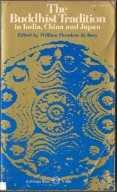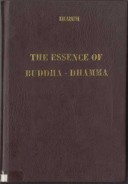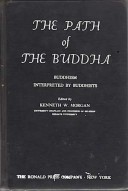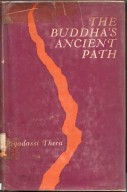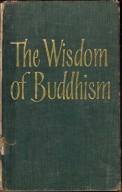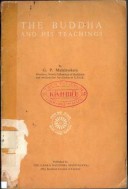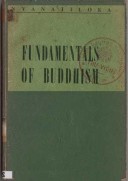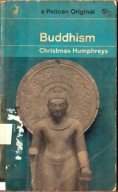Tìm Sách
Sách tiếng Anh-English >> The Great Asiatic Religions And Thier Social Functions
Thông tin tra cứu
- Tên sách : The Great Asiatic Religions And Thier Social Functions
- Tác giả : Houtart, François
- Dịch giả : Francois Houtart & Geneviève Lemercinier
- Ngôn ngữ : Anh
- Số trang : 226
- Nhà xuất bản : Centre de Recherches Socio-Religieuses Université Catholique de Louvain
- Năm xuất bản : 1980
- Phân loại : Sách tiếng Anh-English
- MCB : 1210000006061
- OPAC :
- Tóm tắt :
INTRODUCTION
The exuberance of the Mahayana (Great Vehicle) Buddhist temples, the solid beauty of the Burmese or Sinhalese stupas, the classic lines of the old Confucian temples in the countries with a Chinese cultural tradition, the brightly painted interlacing of the trapezoidal towers of South India’s Hindu temples, the sober architecture of the old mosques and the inwardness revealed in the arrangement of the gardens and buildings of Japanese Zen constitute the thousand and one ways in which the great Asiatic religions are manifested.
Impassive rows of hundreds of bodhisattvas (Buddhas-to-be) waiting in the penumbra for entrance into nirvana, the great lying Buddhas, the statues of enlightenment —one finger over the mouth: contemplative or expressing wisdom,— the Hindu gods Ganesa, Krishna or Sankara, closer to everyday reality, not to mention the guardian spirits of the temples or the gods which protect the villages perched on their horses, express the religious sentiments and beliefs of Asia.
The long chants of the muezzin, the interminable recitation of Buddhist mantras, the mysterious sounds of the Confucian ceremonies of the seasons, the almost monophonic flute accompanying the Hindu festivals, the temple bells, the drums vigorously beaten by bare hands in the Buddha’s Tooth Temple in Kandy or at the time of the great annual perahera (procession), are some of the resonating manifestations of the religious world* To them must be added the odor of hundreds of sticks of incense which spread their perfume while slowly consuming themselves before little domestic altars or in temple entrances, as well as in front of a sacred Image placed In taxis or a bus. The even more fragrant lotus flowers or temple flowers too, accompany all ceremonies and sacred practices.
If, in a sociological perspective, we want to go beyond the mere expressions and ask ourselves about the meanings that these gestures, these rites and these practices —but also these beliefs— take on in relation to the organisation of societies and their functioning, we have to take an intellectual step which allows US to relocate the religious phenomena within the ensemble of social reality, for they are situated in the very interior of the symbolic field, that is to say, within the field of representations.
In effect, every social construction is accompanied by a symbolic representation. It is that which constitutes the specificity of human societies. There is no economic or political activity which Is not interpreted and expressed within this second dimension of reality —which undoubtedly would not exist without the first, but which fulfills an important function in the construction of social reality as a code of practices. The latter, in effect, are not all invented daily by social actors. To the contrary, the great majority are oriented and conditioned by socially constructed norms, and interiorised by individuals. The properly sociological question thus consists in asking what functions the beliefs, expressions, ethical codes and religious organizations play In the production of social reality, and in its reproduction or transformation, as symbolic elements inducing practices or as systems of specific social relations.
An initial domain In which religions intervene is that of the representation of relations between man and nature. In effect, while the development of the productive forces remains weak —that is, while man lives in strict dependence vis-a-vis nature without being able either to explain it scientifically or to act upon it technically at least in limited measure,— analogical thinking tends to attribute to natural elements characteristics proper to human beings : intentions, reactions, interventions. The representation of the relationship to nature Is thus peopled with animated beings, divinities or personalisations of natural elements.
This is what we find In all forms of popular religion, throughout the ensemble of religious systems. Such a function fulfilled by religious codes, that is to say by religious beliefs and experiences, in found In all the precapitalist modes of production, whatever they be. This is because all of them are characterised by a weak development of the productive forces. In the peripheral capitalist social formations, where this mode of production has not significantly influenced the concrete possibilities of controlling nature for the great majority of the populations —because it was not necessary for capitalism’s central development—religion also continues to fulfill this same function.
But there is also a religious reading of social relations, and this is very different according to the mode of production because one of the characteristics of the latter is precisely the specificity of the social relations of production. Nonetheless, In all cases it is a question of a religious representation of more or less elaborated social constructs, expressing itself in coherent systems of beliefs or in simple ritualistic expressions. These constructions, responding to the dual need of human groups for material subsistence and historical survival (to produce and reproduce), encompass contradictions, most of which are resolved in the social realm. But the interpretation of these contradictions and their symbolic solution is often religious in precapitalist societies. That Is to say, human groups represent the construction of social relations to themselves as the fruit of a supernatural will or Intervention (spirits, divinities, God). This is carried out through a “naturalization” of the social order which, rendered equivalent to that of nature, like the latter can depend only on superhuman powers, since it Is not only a question of structures established once and for all, but of constant dialectical processes, this social function of religion Is continually reproduced.
Inasmuch as political or social practice or scientific analyses do not destructure these explanatory systems—which by their very existence become Justifications— the religious codes remain prevalent in the discourse on social realities. In other words, the social order established between different human groups through feudal or caste relations, and the various forms of absolute political power—all mechanisms produced through and reproducing the diverse ways of appropriating the economic surplus, controlling the means of production and dividing labor—are reprensented. In religious terms. It Is not necessary to believe that lineage-based societies are exempt from contradictions, though indeed these are not due to class oppositions. They are manifested for example between the necessities of daily living and historical survival, the former capable of being satisfied through the extended or lineage-bases family, and the latter demanding relations between different lineages within the clan, through the exchange of women. Deep contradictions also exist between men and women as social actors. In these ca6es too, religion intervenes in the construction of relationships and in large measure completely covers the field of representations.
If the specific places of the relations to nature and those of social relationships can be circumscribed, this is a domain which encompasses them and where religion is central. It is that of the origins of the universe and of life, and of their outcomes! in other words, the domain of finalities. But it is not only personal and individual dimensions which are at work at this level. There are also social aspects which as such interest the sociologist of religion. We said that the field of representations simultaneously includes relations to nature and social relations, for it tends to represent at the same time, in a coherent vision, the genesis of the world, the origin of life and the future of humanity. The latter element is denied in its collective aspect in the case of purely individual salvation religions, or to the contrary affirmed in a posthistoric common destiny. Religious beliefs which go beyond the directly functional aspects of immediate relations with nature or social relations also can intervene at these two levels, but is is important to distinguish their specificity so as not to simplify the analyses. This kind of interrogation about a global meaning is found throughout all modes of production, while clearly taking on diverse forms according to the construction of the relations of production and according to the state of the productive forces.
If we speak of representations, we situate ourselves clearly in the symbolic field and not in that of economic and social reality. But this does not mean that these representations exercise no influence over the latter. In effect, there is no human society without its field of representations. Once it is socially constructed —and that is a simultaneous process with the construction of the infrastructure (posterior only in the logical sense)— the symbolic field acquires a relative autonomy, and consequently the codes thus elaborated and instituted can in turn influence practices in the economic, social and political domains. Besides, the institutionalisation of the representations gives them their own rhythm of evolution, which is not necessarily covariate —at least in the short term— with the evolution of the productive forces or with that of social relations. All this allows U8 to say that, sociologically, the symbolic field is not simply a reflection of the infrastructure of a determined social formation, but that it is a more complex reality which indeed is determined by the economic relation, though only in the last instance. This concept, in effect, implies a series of mediations and of historically numerous and complex chains of causality such that, as Maurice Godelier demonstrates, the social relations of the religious system can assume those of the social relations of production in certain societies; hence, for example, religious agents exercise political functions in a feudal or slave society.
The distinction between the social and ideological functions of religion in the domains of nature or social existence, or in the search for global meaning, and the recognition of the relative autonomy of the ideological or symbolic field (hence of the religious field as well) are Important In understanding the sociological reality of the religious systems themselves. Thus the same elements of the religious system can have different functions, as when the ancestors, whose cult is clearly linked to the historical existence of the group, also operate effectively on nature (rain or sicknesses). To the contrary, different functions sometimes may be fulfilled by different religious systems within a single structure, as in the case of Theravada Buddhism where the spirits and divinities operate In the domains of daily life, while Buddhism Is oriented only toward the pursuit of nirvana. In other cases, the whole of the religious field is covered by a single religious system, integrating all the functions of the religious field through a series of transactions or transformations, according to the state of development of the productive forces or according to the form of the social relations of production.
The great Asiatic religions —those which transcend the stage of mere tribal religions, animism or shamanism— have formed important elements of the ideologies of class societies since the formation of the latter. In addition, the principal condition for their genesis and development was the constitution of such societies, because they allowed for a division between manual and non-manual labour —which is, among other things, indispensable for the existence of religious specialists. Intervening as a key element in the representation of the social relations in their phase of construction and in their reproduction as well as codes of social practices, these religions acquired a force which was all the greater in that the level of the productive forces was weak and hence the possibilities of explanation of and action upon nature, as veil as social relations, was very limited. It is this latter factor which allowed them to subsist during an extremely long period and thus to absorb certain changes of social or political positions of power-groups or social actors. In effect, dynasties or kings themselves could change without that affecting the religious system the basis of their legitimacy.
On the other hand, the key moments for the religions of Asia are situated at the time of transitions between dominant modes of production. These religions were born at the time of the passage of lineage-based societies to class societies. Their social functions were transformed at the time of the passage toward absolute political power or towards feudal modes of production. With the introduction of the capitalist mode of production they ceased to function as a system of legitimation of the new social relations of production, and of the political field. As for transitions towards socialism, the latter express themselves in an effort towards the progressive exclusion of all of the ideological functions of religions. Hence it is Important to enter such material through this angle, since the goal of this work is to furnish interpretive hypotheses allowing for the better understanding of religious phenomena in their social insertion.
The social functions fulfilled by Asiatic religions also permit an understanding of Christianity’s mode of implantation. The latter, in effet, could take on only certain forms. Christianity, like Islam, Is an exogenous religion for the South, South-East and East Asian societies. As we will have occasion to verify in what follows, the principal mechanisms of Its Implantation have been the following : the Installation of foreign groups in specific economic functions, as in the case of the Syrian merchants at the origin of the non-Latin Churches of Kerala; imposition by political- force, as in certain Portuguese colonies; penetration into the lineage-based societies, with the Philippines being the most striking example; the conversion of marginal groups which were not integrated Into the-class society, such as minority tribal groups or out-castes I and, finally,’ the integration into Christianity of a non-negligible part of new, Westernized social strata. But before studying these kinds of implantation and their social consequences, we will examine in greater detail the principal types of social functions fulfilled by the religions of Asia.
CONTENTS
INTRODUCTION……………………. 1
CHAPTER I THE RELIGION OF THE LINEAGE-BASED SOCIETIES 8
1° The lineage-based societies in ancient Asia…………………… 10
- The double constraint of production and reproduction 11
- The dominance of the kinship structure………………….. 14
2° Ideology and the social functions of religion…………………. 15
- The symbolic reading of the relationship of men to nature: animism… 16
- The symbolic reading of the contradictions inherent in social relations 18
- Origin, finality and global meaning of life……………….. 23
3° Religion among contemporary lineage-baaed societies……. 26
CHAPTER II THE RELIGIONS OF ASIA IN PRECAPITALIST CLASS SOCIETIES 32
1° The genesis and development of Asiatic religions in the passage from lineage-based societies to precapitalist class societies……….. 34
- Hinduism……………. 35
1) The establishment of the Aryans and their religious production.. 35
2) The emergence of a social caste-structure, and of a new religious production……………………….. 39
- Buddhism……………. 45
- Confucianism, Taoism and Chinese Buddhism……. 51
1) Confucianism… 54
2) Taoism…………. 56
3) Chinese Buddhism…. 58
- Islam………………….. 62
1) The pre-Islamic Arab societies……………………………. 83
2) The socio-political context and the genesis of Islam.. 65
3) The establishment of the Islamic politico religious entity… 69
- Class societies and Asian religious systems………… 76
2° The links between the Asian religions and the lineage-type religious systems in societies with a tributary mode of production. 78
- Religion and the tributary mode of production……. 78
1) Characteristics of the tributary mode of production……….. 78
2) Differences between the tributary and the feudal modes of production 81
3) The place of religion in the tributary mode of production.. 84
- The Chola Kingdom in southern India, type of an Asian tributary society 88
1) Political domination and lineage-type structure in the Pandyan period 88
2) The political domination of the Cholas and its Impact on the tributary mode of production that prevailed in the Ancient Pandyan Kingdom 96
- The reinforcement of political power………. 98
a ) The control of the means of production as a factor of the reinforcement of the political power… 98
- b) The growth of the administrative bureaucracy and the army as factors leading to the reinforcement of power. 100
- c) Religion and religious agents as factors for the reinforcement of political power……………………………. 103
- The reinforcement of village autonomy….. 104
3° The setting up of State religions In the establishment of
the feudal mode of production… 106
- The Kandyan feudal system and Theravada Buddhism.. 107
1) The economic bases of the Jjolitical power…. 108
2) Power-structure and caste………………………… 117
3) The religious expressions of the political power….. 120
- a) Religion as a system of meanings…………………. 120
- b) Structure of religious meanings and socio-political structure 123
- c) The social function of the religious agents……… 129
- d) The homologies…………………………………………. 131
- Theravada Buddhism as the state religion in south and south-east Asia 136
1) Geographical and historical framework………….. 136
2) Theravada Buddhism and tributary monarchies….. 137
- a) Buddhism and the monarchy under Asoka……. 138
- b) The king defender of the faith………………………. 139
- c) Divine kings………………………………………………. 141
- d) Bodhisattva concept…………………………………… 142
- e) King-Sangha link in Theravada……………………. 144
- f) The mahayana experience……………………………. 145
- g) Sociological reflections……………………………….. 146
Conclusions : Religion and precapitalist Asian societies.. 149
CHAPTER III THE LOSS or THE TRADITIONAL FUNCTIONS WITH THE INTRODUCTION OF THE COLONIAL CAPITALIST MODE OF PRODUCTION…160
1° The Portuguese mercantile colonization and its impact on Buddhism in Sri Lanka…161
- The stages of Portuguese strategy…………………………….. 161
1) Commercial strategy: 1505-1530………………….. 161
2) The alliance between the two kingdoms: 1530-1551…. 162
3) The protectorate: 1551-1597………………………… 162
4) The colonization…………………………………………. 168
- The destructuring of the political, economic and religious systems……169
1) The economic and political systems………………. 169
- a) Transformation of the economic organization…………. 169
- b) Transformation of the dominant group in social relations …….173
2) The religious systems……………………… 175
- a) The destructuring of Buddhism…………………………….. 175
- b) The implantation of Christianity………………………….. 179
- The establishment of the link with the political field…… 179
- The conversion of kings, leaders and elites…. 180
- The conversion of ethnic and social groups… 181
- The privileges accorded to converts……. l84
- Introduction of a new system of meanings.. 185
2° Western colonization and its impact on Theravada Buddhism.. 190
- Sangha influence on the wane………… 191
- The rise of a westernized elite and its impact on Buddhism……192
- Buddhism and the nationalist movements of the westernized class…….193
- Political use of Buddhism during the Japanese occupation…….199
- Buddhism and Nation-building………………. 200
- Independence and progressive loss of influence of
Buddhism as a political ideology………………… 201
- Moves aimed at restoration……….. 202
- Separation between religion and state. 205
- Conflicts with Catholic minority… 207
- New political role of the sangha…. 208
- End of an epoch………………………. 213
- Buddhism, liberalism and socialism…… 21
Social function of religion in the case of Theravada Buddhism…. 216
THE ASIAN RELIGIONS AND CHRISTIANITY………. 226
 Facebook
Facebook
 Google
Google
 Google+
Google+


